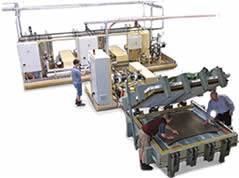New Technologies for Automotive TP Composites and Acoustic Laminates
Rieter Automotive Systems, a global producer of automotive trim components and a leader in acoustic systems, unveiled several new technologies last June at its 17th biennial acoustics conference for customers at its headquarters in Winterthur, Switzerland.
Rieter Automotive Systems, a global producer of automotive trim components and a leader in acoustic systems, unveiled several new technologies last June at its 17th biennial acoustics conference for customers at its headquarters in Winterthur, Switzerland. Foremost among these was novel software for simulating Rieter’s many process and material options for making carpeted acoustic laminates. Other new developments include acoustic laminates with full or partial foil heat shields and new technology for using glass or natural fibers in direct compounding and molding of long-fiber thermoplastic (DLFT) composites.
Simulating laminates
Rieter, which has U.S. offices near Detroit, makes acoustic laminates by drape forming, vacuum forming, and matched-metal compression molding, among other methods. The company also has a wide range of acoustic materials to choose from, such as coconut fiber, cotton shoddy (shredded clothing), and small air-filled pouches of PE film glued to the underside of parts. With the help of the Royal Institute of Technology in Stockholm, Sweden, Rieter developed simulation software to help choose the most efficient manufacturing method to make its acoustic parts. The simulation approach, which took two years to develop, became available for the company’s use this summer. It is currently limited to drape and vacuum forming technologies, but Rieter is working to extend it to compression molding.
The ultimate idea is to predict and optimize heating and cooling times, energy cost, material distribution, and residual stresses during and after forming. The software simulates deformation with single- or double-sided tooling, either draping with heat and gravity or thermoforming with heat and vacuum.
Rieter’s software combines commercial finite-element software modules to model the shear behavior of composite textile fabrics (woven, non-woven, and tufted). Rieter also used experimental software developed by Dr. J. Bergstrom of Exponent Inc. in Natick, Mass. This models the relative viscoelastic behavior of mono- and multi-layer polymeric materials, using an approach originally developed for particle-filled elastomers.
Rieter tested its new program by simulating relatively simple axial stretching of a multi-layer carpeted material in a “picture-frame” apparatus. The frame applies shear by pulling a square shape into a rhomboid while measuring the temperature and the stress applied in a single plane.
Rieter tested a floor underlay panel of nylon-tufted carpet backed with layers of nonwoven reinforcement fibers, latex adhesive, mixed-felt acoustic substrate, and multi-layer PE film. The acoustic substrate was cotton shoddy (40% to 90% cotton) made from shredded clothing. Rieter found good agreement between the simulated “picture-frame” stretching and actual shear deformation behavior.
Foil heat shields
Rieter’s latest compression molding innovation, called Al-FA (aluminum foil application), molds a sandwich of DLFT composite with one or two skins of aluminum foil as a heat shield. A prototype part with one foil skin is being road tested.
Rieter says it is far more difficult to apply a partial heat shield than to cover an entire part surface with foil. Until now, parts with partial foil coverings were made in two steps: First the part was formed, and then foil was applied with secondary heating. Rieter has now developed a one-step method for partial heat shields.
Natural-fiber composite
Rieter’s most celebrated recent DLFT achievement is its first natural-fiber part, a spare-wheel pan cover for DaimlerChrysler, which is also the first natural-fiber external body part for a production car. It uses abaca fiber made by Manila Cordage in the Philippines. Abaca is a relative of the banana plant that is raised for making marine rope and twine. A compound of polypropylene and 30% chopped abaca fiber was patented by DaimlerChrysler for automotive molding. The part won the top automotive prize at the JEC show in Paris last spring and the Environmental category of the SPE Automotive Innovation Awards last month. Part of Rieter’s achievement was moving the part from R&D to production in only 18 months.
Rieter uses a new servo-controlled profiling die to control the thickness of the extruded molten slab. Such a die is also used for glass-filled DLFT, but it is more essential for natural-fiber compounds because they are much more viscous. Without profiling they would require extremely high tonnage to press into thin-wall parts.
Rieter places different profiles of molten abaca/PP slab in specific tool locations to optimize the molding cycle. Multiple profiles overlap, so there is no weld-line problem, Rieter says.
A second new Rieter device makes it possible to feed either glass or natural-fiber rovings without changing the production set-up. Also, Rieter developed “two-component” compression molding, using materials with higher and lower percentages of long-glass fiber at specific locations in a tool. This approach is being tested for an underfloor part.
Read Next
Why Long-Glass Molders Are Compounding In-Line
Compounding raw fiberglass directly into thermoplastic molded parts is growing rapidly in Europe, and now it’s coming here. D-LFT, as it’s called, promises to make large parts cheaper and stronger—but with new technological risks and higher up-front investment costs.
Read MoreComposites: New Rapid Molding Technologies and Unusual Reinforcements at Paris JEC Show
New molding technologies seen at the JEC Composites Show in Paris in April promise dramatically faster cycles than are achievable with autoclaves or RTM. One novel technique rapidly heats and cools a thin tool by "floating" it on a flexible bladder—similar to a water bed—that is flooded with heat-transfer fluid.
Read MoreLong-Fiber Thermoplastics Extend Their Reach
Smaller parts, a wider range of resins and reinforcements,and retrofittable molding equipment were among the news indirect-compounded long-fiber thermoplastics presented at a recent Plastics Technology conference. Extrusion and thermoforming are also new extensions of this process.
Read More


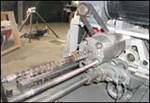
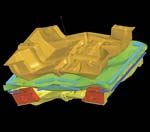

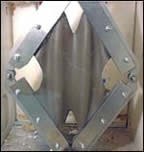
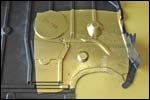










.png;maxWidth=300;quality=90)






